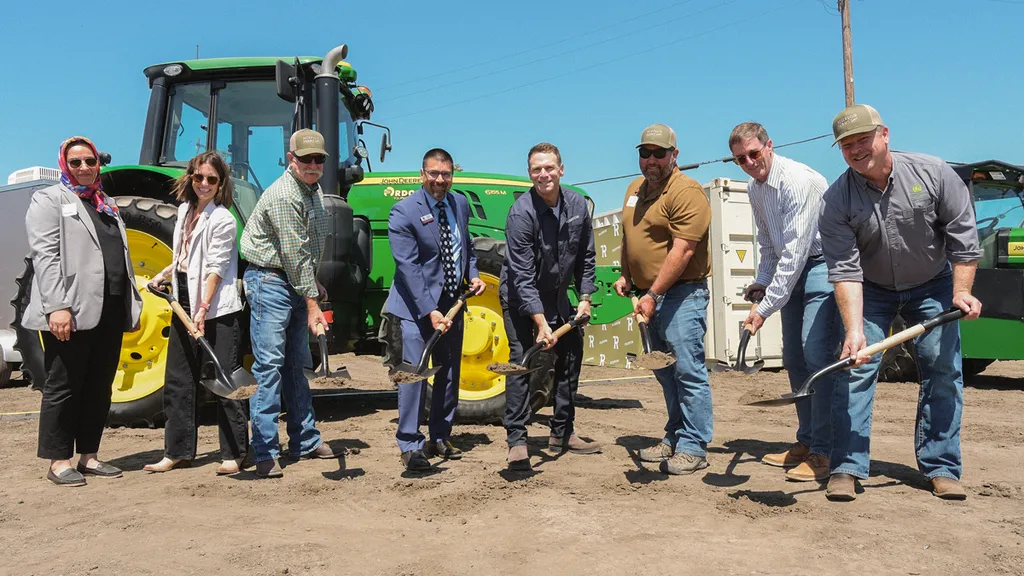The Reservoir officially opened its first on-farm innovation hub in Salinas, California, last week, drawing over 200 growers, investors, and industry partners to a ribbon-cutting ceremony on land leased from Tanimura & Antle. The event marks a tangible step toward the organization’s vision of an “Olympic Village of AgTech”—a collaborative space where startups, growers, and technology developers can test and refine solutions for specialty crop production.
The hub’s launch comes at a critical time for agriculture, as growers face mounting pressure from labor shortages, climate variability, and rising input costs. Unlike traditional accelerators or research stations, the Reservoir’s model embeds startups directly on working farms, providing immediate access to grower feedback, testing acres, and pilot opportunities. This proximity to real-world conditions could shorten the time it takes for promising technologies to move from prototype to commercial adoption.
**A Model Built on Partnerships**
Central to the Reservoir’s approach is its expanding network of industry collaborators. Driscoll’s, Netafim, Nutrien, and Taylor Farms joined as new partners, bringing expertise in berries, irrigation, crop inputs, and fresh-cut produce. Their involvement ensures startups can validate technologies against the operational realities of large-scale growers—an often-overlooked hurdle in agtech development.
A separate but equally significant partnership with John Deere, announced just days before the hub’s opening, will give residents access to Deere’s equipment, APIs, and pilot programs. This collaboration reflects a broader trend in agriculture, where legacy manufacturers and agtech startups increasingly share resources to drive innovation. “We’re not just talking about incremental improvements,” said Jason Brantley, Vice President at John Deere. “This is about systemic change—building tools that work for growers today while preparing for the challenges of tomorrow.”
For startups, the benefits are clear: direct access to John Deere’s technology stack, structured field days for testing, and a pathway to scale through Deere’s dealer network. Early residents at the Salinas hub—including Beagle Technology, BHF Robotics, and Cropmind—are already leveraging these resources to refine automation, AI-driven crop monitoring, and data management tools.
**Why Salinas?**
The choice of Salinas as the first hub location is no accident. The region, often called the “Salad Bowl of the World,” produces over 70% of the U.S. lettuce supply and generates nearly $5 billion in crop value annually. Its concentration of high-value specialty crops—from strawberries to broccoli—provides an ideal testing ground for technologies aimed at improving efficiency, yield, and sustainability.
Local leadership has embraced the initiative as a natural extension of Salinas’ agricultural legacy. “Innovation has always been part of our DNA,” said Dennis Donohue, Salinas Mayor and Executive Director of the Western Growers Center for Innovation and Technology. “But the Reservoir takes it further by creating a space where growers and technologists can co-develop solutions in real time.”
The hub’s physical presence on a working farm also addresses a persistent challenge in agtech: the gap between lab conditions and field reality. Startups often struggle to secure testing sites or grower buy-in, delaying commercialization. By embedding innovation within existing operations, the Reservoir reduces that friction, allowing companies to iterate based on direct feedback.
**Scaling Beyond California**
While Salinas serves as the proof of concept, the Reservoir’s ambitions extend far beyond the Central Coast. Plans are already underway for additional hubs in Arizona and other key growing regions, with a pilot program launching this winter at the University of Arizona Experiment Station in Yuma. The expansion will enable multi-regional testing, critical for technologies that must perform across diverse crops and climates—from leafy greens to tree nuts.
This geographic diversity could also help address regional disparities in agtech adoption. Historically, innovation has clustered in areas with dense venture capital activity, leaving some growing regions underserved. By establishing hubs in major agricultural zones, the Reservoir aims to democratize access to cutting-edge tools, ensuring solutions are tailored to local needs.
The broader implication is a shift in how agtech innovation is structured. Rather than relying on isolated research or top-down mandates, the Reservoir’s model fosters collaboration between growers, startups, and industry giants. If successful, it could serve as a blueprint for other regions looking to bridge the gap between technology and practical application.
For now, the focus remains on Salinas, where the first cohort of startups is already at work. Their progress—and the hub’s ability to deliver measurable outcomes for growers—will determine whether this experiment in on-farm innovation can scale into a national movement.

